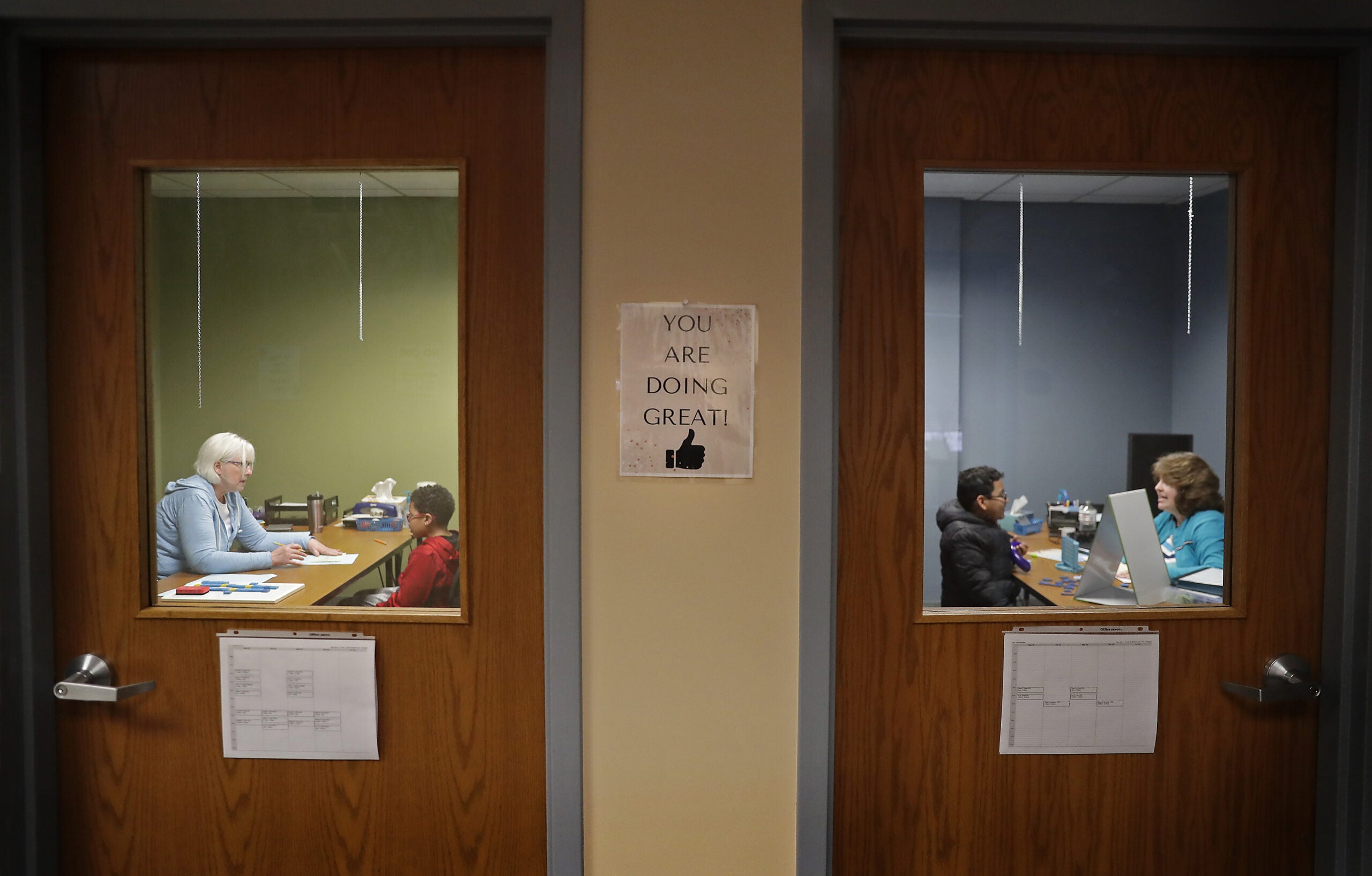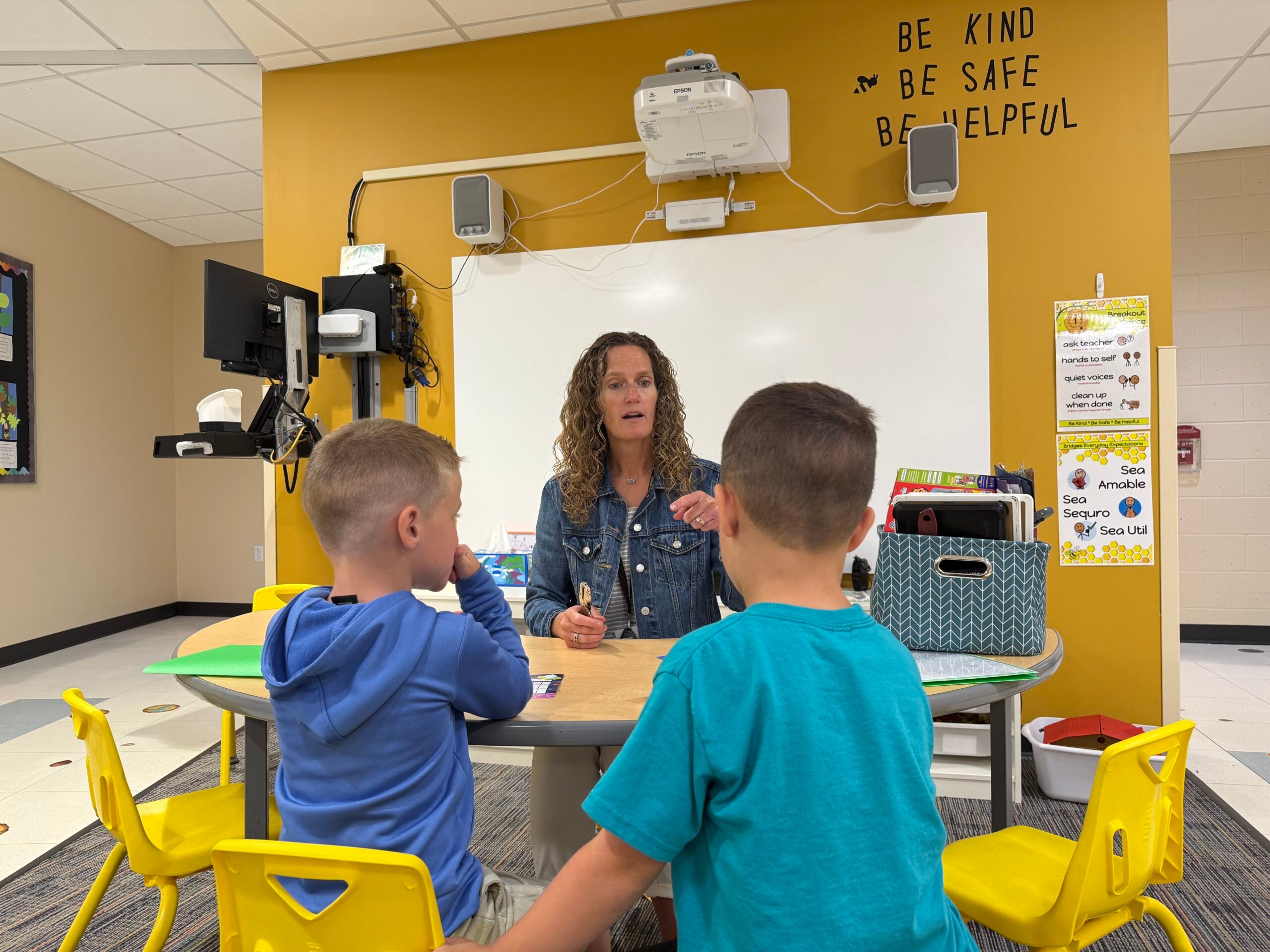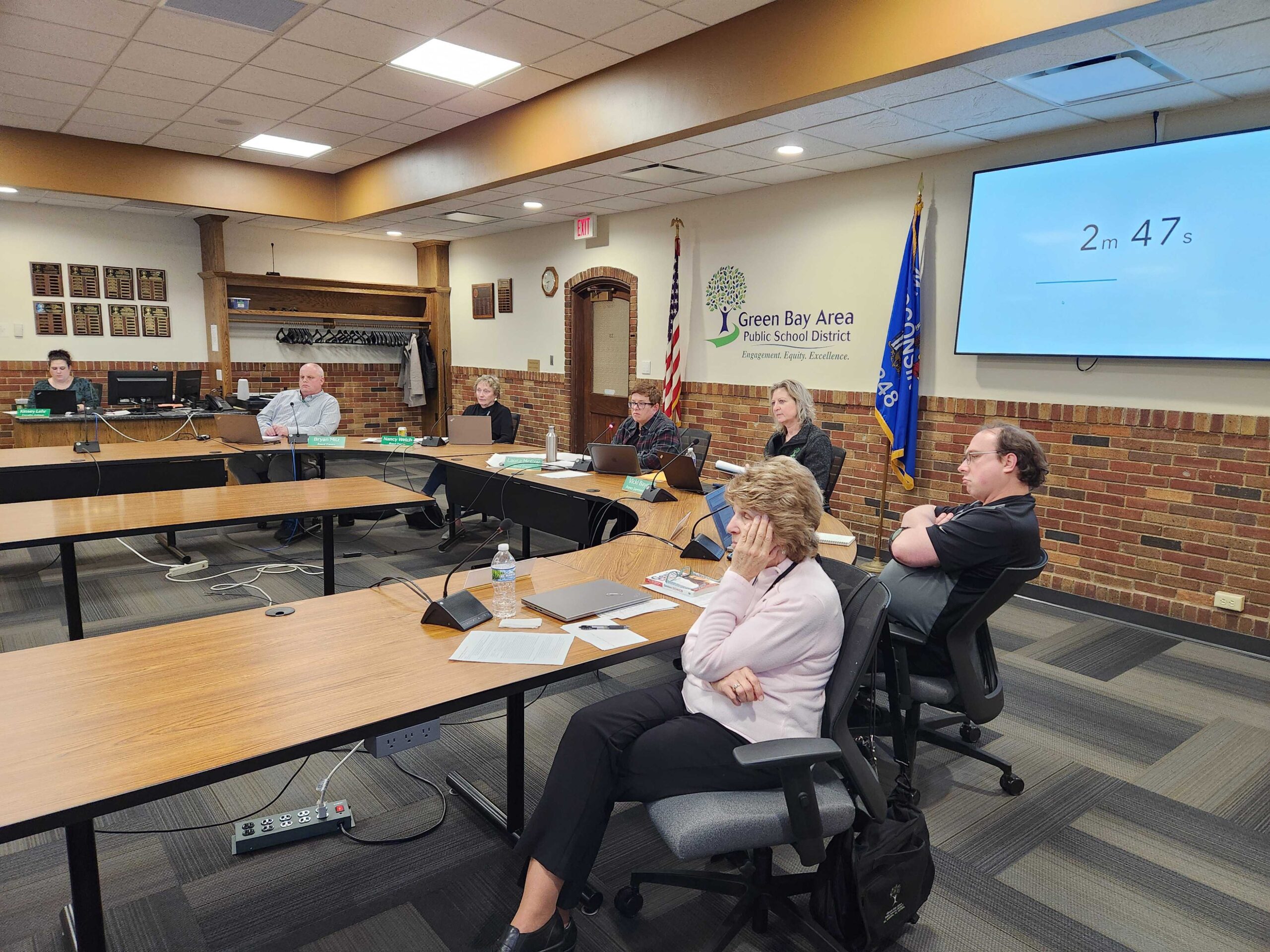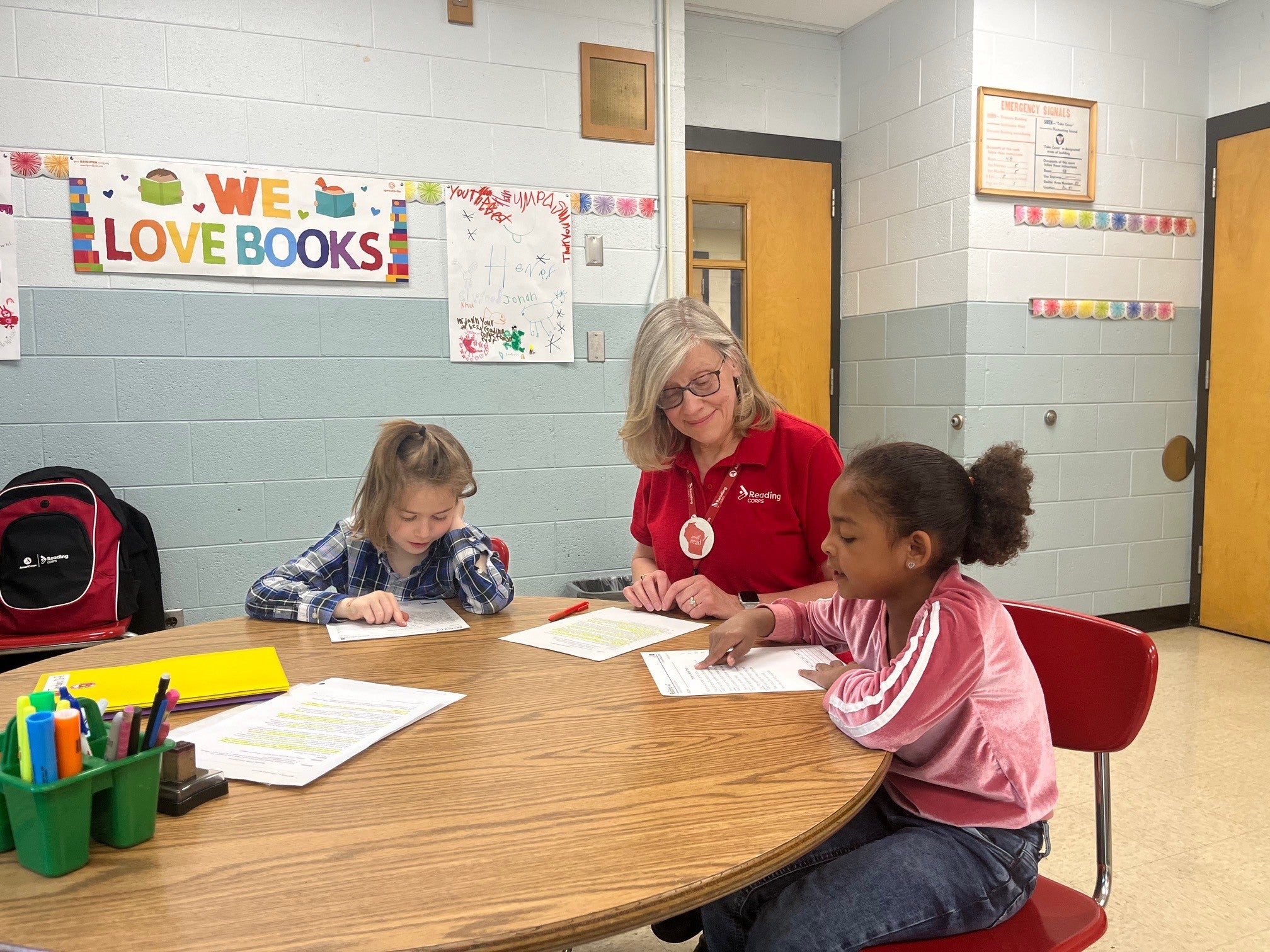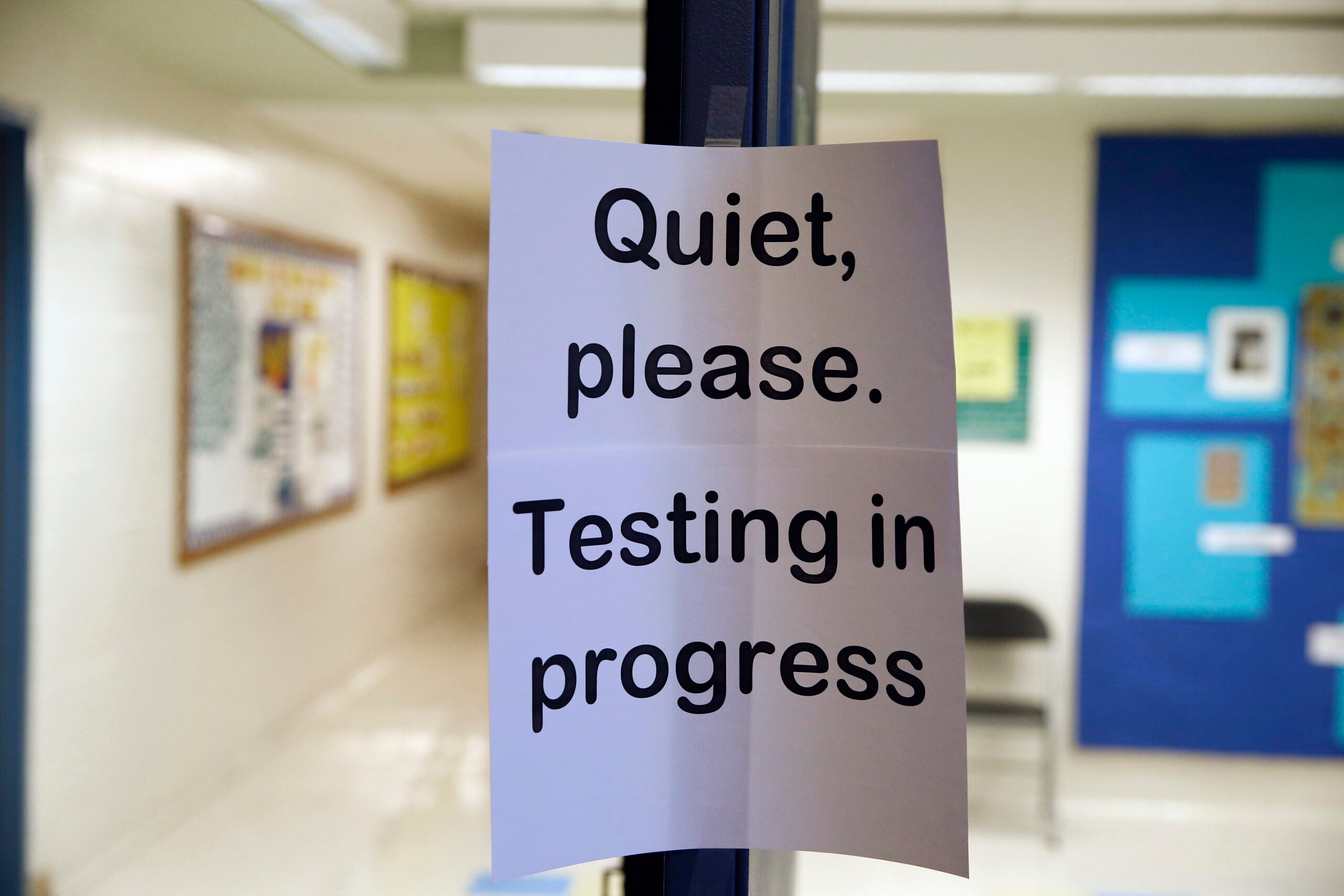As early as kindergarten, Robin Pierre started to notice that her daughter, Hattie, was falling behind. She wasn’t able to read the books they were sending home, despite being in a charter school known for its focus on literacy.
Hattie started working with a reading interventionist during kindergarten and throughout first grade. But then her behavior started to escalate. She’d hide under desks and run out of the classroom. She was moved to another charter school for second grade, one focused on play-based learning and field trips in hopes that environment would better suit her.
All this time, Hattie’s trouble with reading persisted. Pierre asked to have her evaluated for special education.
News with a little more humanity
WPR’s “Wisconsin Today” newsletter keeps you connected to the state you love without feeling overwhelmed. No paywall. No agenda. No corporate filter.
Hattie was assessed; but when Pierre asked questions about dyslexia, she said the school told her they don’t acknowledge dyslexia without a diagnosis, and that could only come from brain imaging.
“It was a fight at first,” Pierre said.
Dyslexia looks different for each person who has it. It’s a neurobiological learning disability that can make it difficult for people to decode words and read fluently. People with dyslexia may struggle with spelling and reading comprehension as a result of their challenge matching letters to their corresponding sounds.
The International Dyslexia Association estimates that as many as one in five people could have symptoms of dyslexia, ranging in severity.
Often, people assume that dyslexia is just mixing up letters such as “b” and “d.” It can be that for some people — Pierre said Hattie experienced that — but it’s not the only symptom. For example, people with dyslexia might struggle with slow, choppy reading, memorization or even constantly confuse left and right. It ranges on a spectrum from mild to severe.
For Hattie, reading was “labor-intensive.” She’d often read a sentence three times before she’d actually comprehend what it said. The first few reads were spent trying to identify the sounds for each letter and then trying to put them all together more smoothly, so she could get to the point of comprehension.
Currently, Wisconsin does not require students to be screened specifically for dyslexia, but the state passed legislation three years ago to create an informational guidebook on dyslexia and related conditions to be shared on the state Department of Public Instruction and all school distric websites.
In the years since the guidebook was created, Wisconsin and the rest of the country has turned up the volume on a discussion about literacy after standardized test scores have shown significant declines in language arts during the pandemic.
But those conversations usually don’t include students with dyslexia. Families are often left on their own to get their children tested, diagnosed and supported through outside tutoring. And local tutoring agencies are feeling the burden of an increased need to support these students, who are now often even further behind because of the pandemic.
“It’s something the public school should have done; they should have been able to teach her how to read,” Pierre said.
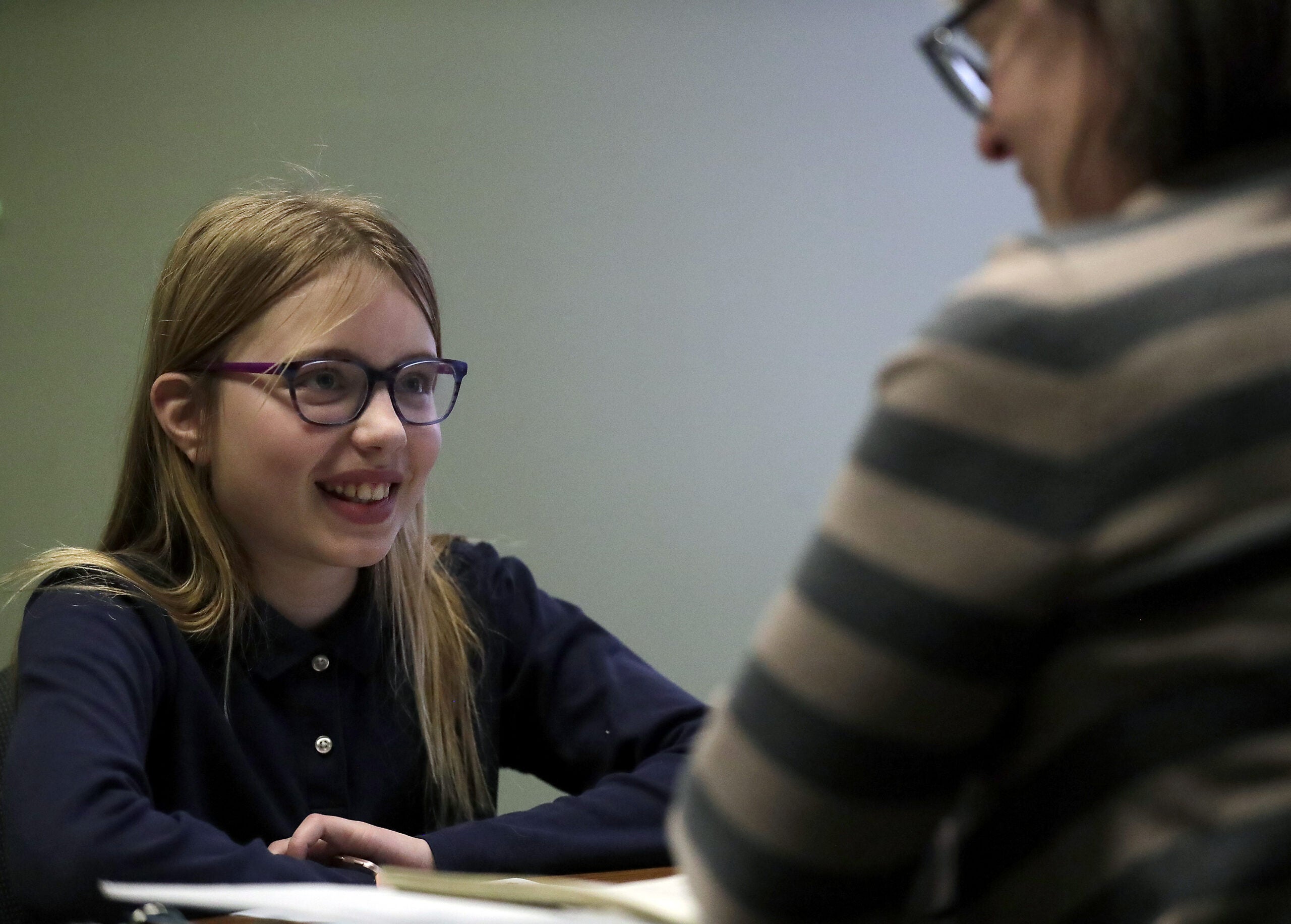
What Wisconsin school districts do to support students with dyslexia
By state law, schools are required to screen students in 4K through second grade annually for “literacy fundamentals.” This includes letter sound knowledge and something called phonemic awareness — the ability to identify individual sounds within a word — which are generally two areas of difficulty for students with dyslexia.
DPI told USA TODAY NETWORK-Wisconsin these requirements are “generally agreed upon to be components of screening for dyslexia.” If a screening indicates they need more testing, there are additional screening options listed in the state’s guidebook that parents and teachers can consider.
In 2021, Republican lawmakers proposed tripling the number of literacy tests for young students to boost low proficiency rates, but Gov. Tony Evers vetoed the bill, saying it lacked evidence and funding.
The state may mandate early screening, but district by district, the overall approach to literacy can look different.
The Menasha Joint School District is focused on being “diagnostic” with students, said Renae Braun, a literacy coach.
It does this by screening students in kindergarten through eighth grade three times a year. Those screenings look at students’ comprehension, fluency and knowledge of phonics. Through those, the district identifies a student’s strengths and areas of concern.
For students behind grade level or who show other challenges on those screenings, the district creates an individual plan — called a Response to Intervention plan — to help them catch up. It focuses on strengthening areas of concern.
There isn’t one method that works for teaching literacy to all students. But Braun said students with dyslexia need explicit teaching and multiple modalities — a combination of visual, auditory and tactile.
“We do dipstick check-ins every two weeks or every week to make sure the plan is accelerating or growing our students,” she said.
Both Menasha and Kimberly school districts see teacher expertise as vital to teaching students who struggle with literacy, whether it’s diagnosed dyslexia or other challenges.
The Kimberly Area School District added a phonological interventionist to its staff in August 2022. The role was designed to be “an in-house expert on decoding and fluency,” according to Holly Prast, assistant superintendent.
This interventionist is trained in a specific dyslexia intervention, among other reading interventions, and works with students directly, Prast said. They also collaborate with teachers to provide new strategies to support students who are struggling.
Many districts have hired reading interventionists to support students through pandemic-induced learning loss, but Prast said Kimberly decided to add a phonological interventionist independently of that.
Carrie Willer, director of elementary education for the Appleton Area School District, echoed the need for a variety of teaching methods to support students. The number of students in any given classroom is the number of different learning styles teachers need to work with, she explained.
“You need a full bag of tricks and a full bag of tools to meet each of those students,” she said.
Appleton has interventionists, teachers trained in a one-on-one reading recovery program and other methods of support, including small group work and collaboration with parents.
Still, fewer than half of Appleton students are reading at or above grade level.
A recent audit of the district’s English language arts curriculum showed a need for more emphasis on phonics and letter sound awareness — strategies that would better support students with dyslexia in the classroom.
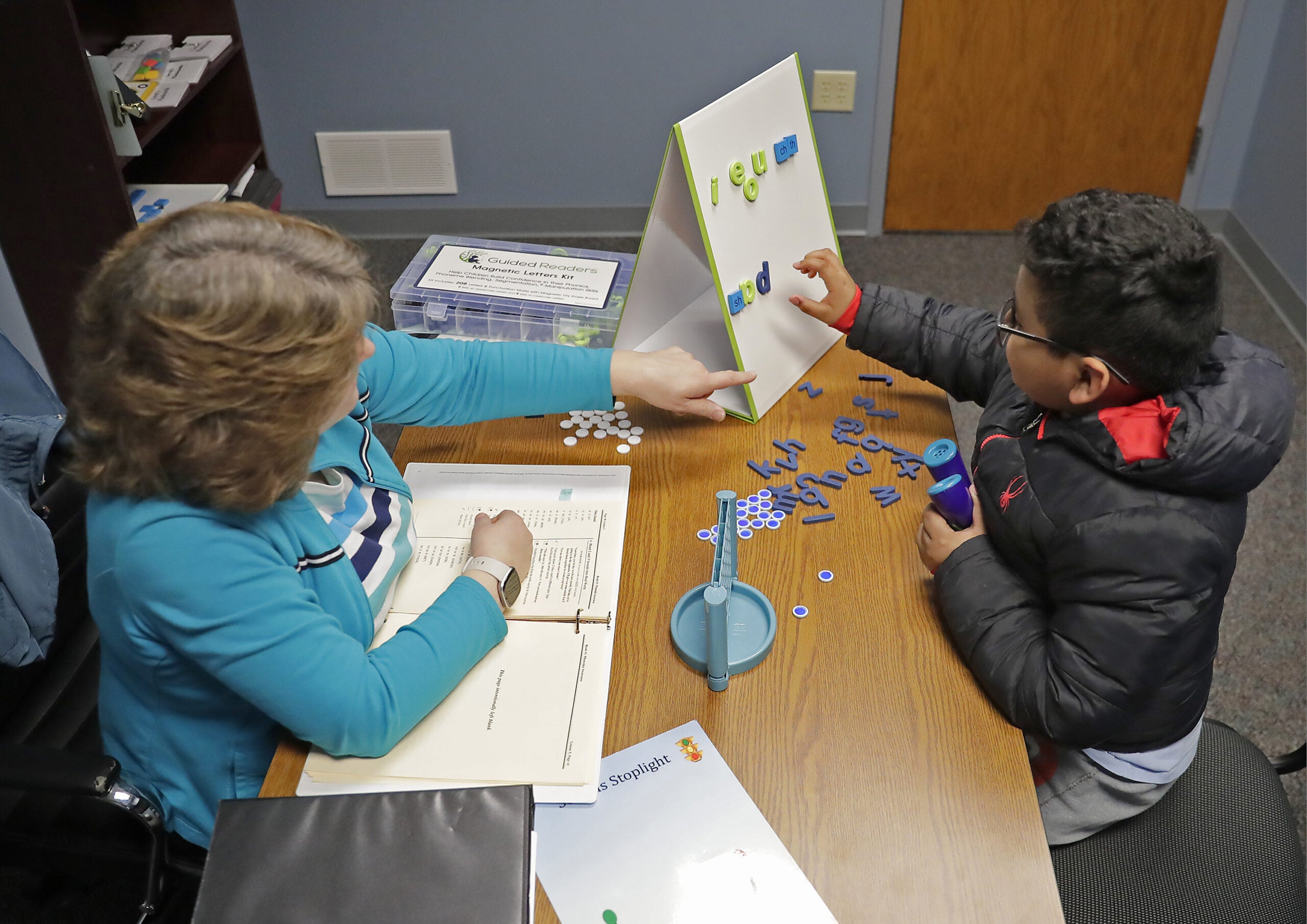
Many families with students with dyslexia have to turn to outside tutoring
When Hattie eventually qualified for special education, the district focused only on her ADHD diagnosis. So, not only did Pierre pay out of pocket for neurological exams, but she had to fight to get the district to even recognize the dyslexia diagnosis in her individual education plan.
It was around then that Pierre found Dyslexia Reading Connection, a nonprofit tutoring organization based in Appleton. That was four years ago, and Hattie has gone twice a week ever since — even through the summers.
DRC has been around for almost 20 years, but there’s been increased demand since the pandemic, said Kimberly Stevens, executive director. Earlier this year, there were 50 students on the waitlist — five times as many as the organization had pre-COVID. And Stevens said new students are coming in for consultations every week.
Today, Hattie is caught up to grade level and has even become “quite an avid reader,” Pierre said. She credits that success more to the tutoring she paid for from DRC than what the public schools provided.
“I didn’t think this day would come,” she said.
When asked how often Dyslexia Reading Connection is screening students for dyslexia, Stevens said, “constantly.” It tries to keep screenings to about five students a week since the Appleton-based nonprofit is already tutoring more than 110 students online and in person.
But it’s not just an increase in the number of students. Stevens said students are coming in further and further behind. Before the pandemic, students would come to DRC a year and nine months behind, on average. Now, it’s not uncommon for students to be three or even four years behind where they should be.
“Parents are desperate to get their kids the right interventions,” Stevens told USA TODAY NETWORK-Wisconsin.
While DRC can’t offer a medical diagnosis, the screening it offers is about an hour long and can usually tell with a high degree of certainty whether the student has dyslexia, Stevens said. After the screening results are explained to the parents, it’s up to them whether they want to move forward with tutoring. It’s first come, first served, since there’s a waitlist, but a family’s scheduling availability may be considered.
On average, students spend four years with DRC working through 10 levels of tutoring that will bring them up to a 10th-grade reading level.
The tutoring starts by breaking language into its smallest parts: individual vowels and consonants. As the levels progress, students move on to syllables, prefixes and suffixes, vowel placement in a word and even influences from foreign languages such as Latin and Greek root words.
Karrie Brass, a tutor at DRC, said her husband, who has dyslexia, uses a car engine analogy to explain it: The brains of students without dyslexia works like driving an automatic transmission when learning to read, spell and write. They don’t need to work through every step of processing language. Most of it happens under the hood without conscious thought.
But for students with dyslexia, their brains are more like driving a car with a manual transmission. They need to shift gears, understand the specifics of how letters make sounds and work through each step of the process; otherwise, it won’t be a smooth ride.
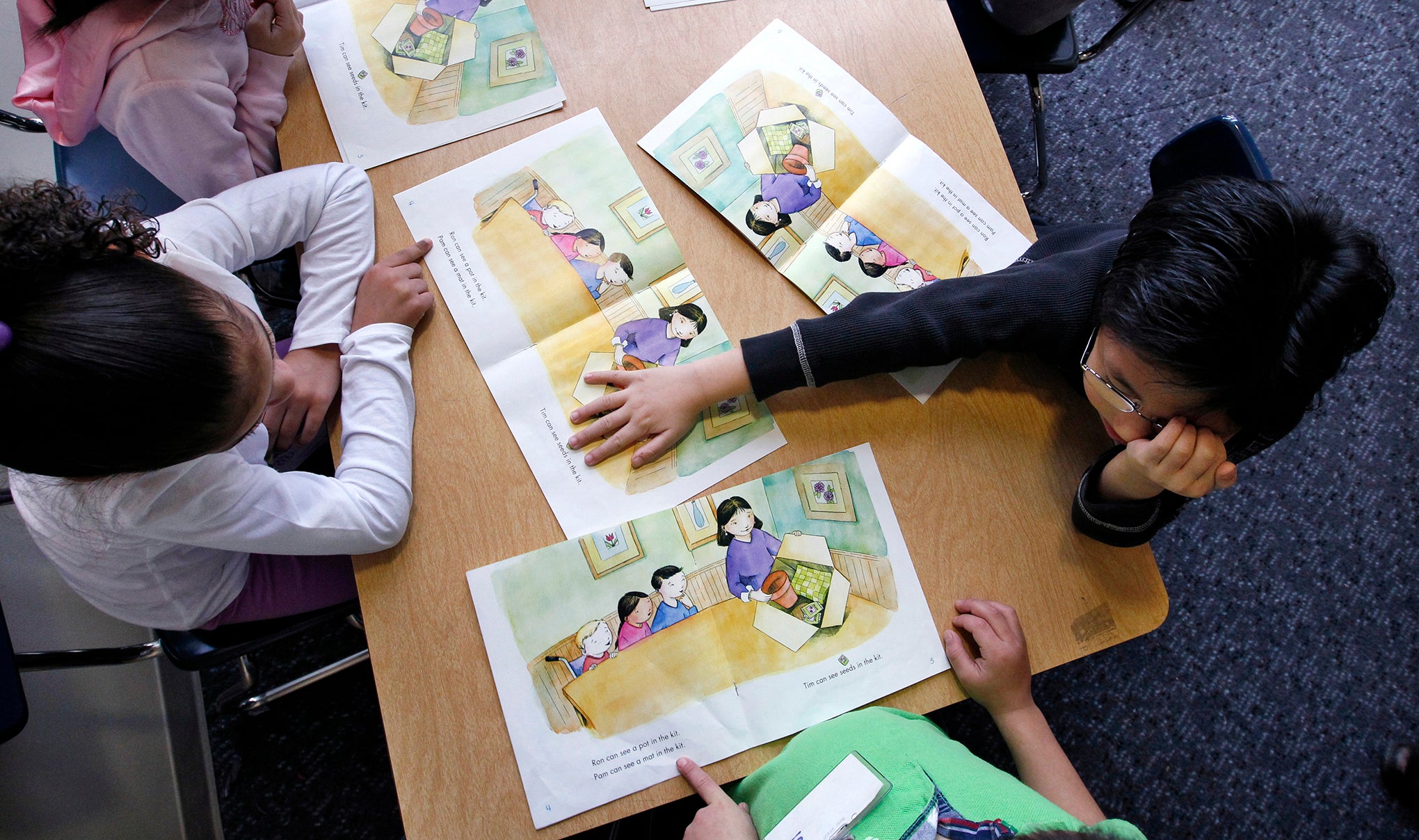
Life after high school for students with dyslexia
Hattie is still making her way through middle school, but Pierre said Hattie has dreams of going to college one day.
And she’s not alone.
Take, for example, Meghan Molthen.
A freshman at the University of Wisconsin-Oshkosh, Molthen was diagnosed with dyslexia the summer before sixth grade. She struggled to spell simple words and saw her classmates read at much higher levels than her, but she didn’t understand why until she got her diagnosis.
Figuring out that she had dyslexia helped give shape to the reason why she was struggling, but it didn’t fix everything. Molthen went to school in Fort Atkinson before moving to Pulaski her sophomore year, so she experienced two districts and their approaches to supporting her dyslexia.
Although a diagnosis made accessing certain supports simpler, Molthen said there were still challenges because the school systems didn’t understand “how to fully accommodate students with learning disabilities.”
When she toured UW-Oshkosh in summer 2021, she asked the admissions office about accommodations for students with learning disabilities. They told her about a program called Project Success.
Project Success is a remedial program for students with dyslexia and other language-based learning disabilities at the school. It starts with a six-week summer program focused on phonics and teaching students the relationship between letters and sounds.
Director Jayme Reichenberger said the program has a reading and writing component, but it also supports students in other ways through the transition from high school to college. By completing the summer program, students can earn up to six credits, which can be a helpful GPA cushion for those early, stressful semesters of college.
Students also learn about what laws protect their accommodations and what services are available to them. Reichenberger said many students come in not really understanding their diagnosis. They might have attended meetings during their K-12 education, but a lot of them didn’t put a name to their disability.
It’s not uncommon for Reichenberger to hear students say that their dyslexia was essentially ignored, so she said they try hard to actually say the word “dyslexia.” There are even campus events where students will write messages like “Say dyslexia” on the sidewalk.
“When a disability is hidden, it’s easy to stereotype and have misconceptions about it,” Reichenberger said.
For Molthen, the program gave her agency over her learning disability. She had a hard time even talking about her dyslexia before, but Project Success taught her how to see it as a benefit.
“I’m so thankful I have it,” she said of her dyslexia. “It pushes me to be a better person.”
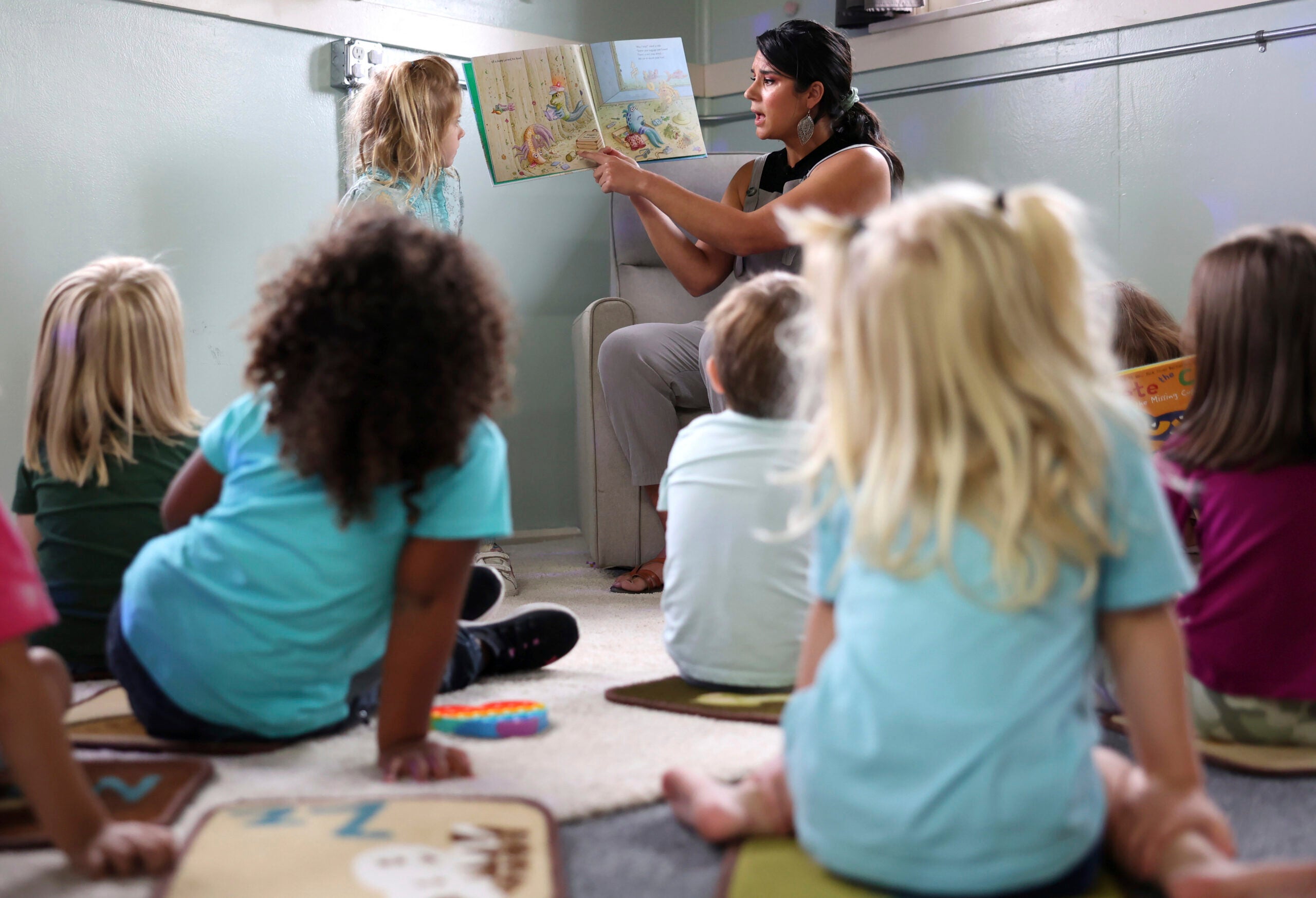
This story is part of the NEW (Northeast Wisconsin) News Lab’s fourth series, “Families Matter,” covering issues important to families in the region. The lab is a local news collaboration in northeast Wisconsin made up of six news organizations: the Green Bay Press-Gazette, Appleton Post-Crescent, FoxValley365, The Press Times, Wisconsin Public Radio and Wisconsin Watch. The University of Wisconsin-Green Bay’s Journalism Department is an educational partner. Microsoft is providing financial support to the Greater Green Bay Community Foundation and Community Foundation for the Fox Valley Region to fund the initiative. The mission of the lab is to “collaborate to identify and fill information gaps to help residents explore ways to improve their communities and lives — and strengthen democracy.”
Reach AnnMarie Hilton at ahilton@gannett.com or 920-370-8045. Follow her on Twitter at @hilton_annmarie.
Wisconsin Public Radio, © Copyright 2026, Board of Regents of the University of Wisconsin System and Wisconsin Educational Communications Board.
